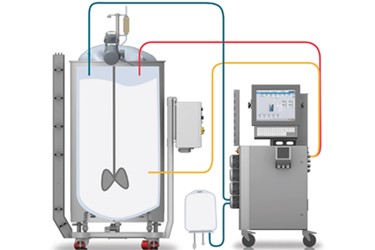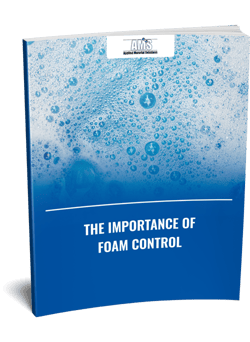Exploring Cutting-Edge Foam Control Technologies for Lasting Practices
Exploring Cutting-Edge Foam Control Technologies for Lasting Practices
Blog Article
A Comprehensive Guide to Applying Foam Control Solutions in Your Operations
Efficient foam control is a critical element of functional performance that usually goes overlooked. Comprehending the ins and outs of foam generation can significantly influence both performance and item quality. By checking out key variables such as application compatibility and workers training, organizations can enhance their foam monitoring efforts.
Understanding Foam Difficulties
Foam difficulties are a considerable problem throughout various sectors, impacting operational efficiency and item top quality. The formation of excessive foam can impede processes such as mixing, transport, and storage, bring about raised downtime and waste. In industries like food and drink, pharmaceuticals, and petrochemicals, foam can conflict with manufacturing lines, triggering product inconsistencies and contamination threats.
Furthermore, foam can obstruct tools performance, bring about costly fixings and upkeep. In wastewater treatment, foam can interrupt clarifier operations, resulting in reduced therapy effectiveness and regulative compliance concerns.
Comprehending the underlying sources of foam generation is essential for efficient monitoring. Variables such as surfactants, temperature changes, and frustration levels can all contribute to foam production. Recognizing these components allows markets to execute targeted strategies that lessen foam formation while keeping product stability.
Kinds of Foam Control Solutions

Mechanical solutions include making use of tools such as foam skimmers or defoamers. These tools literally eliminate foam from the surface area of liquids, thus avoiding overflow and keeping optimal levels in tanks and reactors. Chemical services, on the other hand, consist of the application of defoaming representatives-- materials that disrupt the foam structure, resulting in its collapse. These representatives can be silicone-based, organic, or liquid, each offering distinct advantages depending upon the application environment.
Finally, functional methods concentrate on process changes. This might include customizing tools criteria, such as temperature level and stress, or transforming the circulation rates of fluids to minimize foam generation. Moreover, applying excellent housekeeping methods can likewise alleviate foam development by reducing pollutants that add to foam stability.
Selecting the suitable foam control option entails examining the particular demands of the operation, consisting of the sort of procedure, the qualities of the products entailed, and security factors to consider.
Picking the Right Products
Selecting the appropriate foam control items requires an extensive understanding of the details application and its unique obstacles. Variables such as the sort of foam, the environment in which it takes place, and the desired outcome all play critical functions in product choice. Foam Control. For circumstances, in industries like food handling, it is crucial to pick food-grade defoamers that adhere to safety policies while successfully taking care of foam.
Furthermore, consider the viscosity of the liquid where the foam problem exists. Some items are developed for low-viscosity applications, while others are customized for thicker liquids. Compatibility with existing processes is another important facet; the chosen foam control visit this website representatives need to integrate flawlessly without interfering with overall procedures.
An additional vital element is the approach of application. Some products may call for dilution, while others can be used directly. Evaluating the ease of usage and the called for dosage can provide understandings into the product's effectiveness and cost-effectiveness.
Implementation Methods
Successful execution techniques for foam control remedies call for a click here to find out more methodical approach that straightens product option with operational needs. The first action entails a complete analysis of the procedures where foam takes place, recognizing details locations that necessitate intervention. By involving cross-functional groups, including engineering, production, and top quality guarantee, companies can collect insights that inform the option of one of the most efficient foam control items.
Following, it is essential to establish clear goals for foam decrease, ensuring that these goals are quantifiable and possible. This may include specifying appropriate foam levels and the timelines for implementation. Training workers on the residential properties and application approaches of picked foam control representatives is similarly important, as proper usage is crucial for optimal outcomes.
Additionally, integrating foam control services right into existing process requires careful planning. Ultimately, a well-structured strategy will certainly boost operational performance while efficiently handling foam-related challenges.
Surveillance and Reviewing Performance
Monitoring and reviewing the efficiency of foam control remedies is important for making certain that implemented approaches produce the preferred outcomes. This procedure involves methodical information collection and evaluation to assess the efficiency of foam control representatives and methods. Trick performance signs (KPIs) should be developed before application, enabling a clear standard against which to determine progress.

Assessing efficiency also requires routine evaluations of foam control treatments and representative efficiency. This can be accomplished through sampling and check that testing, permitting drivers to establish if present remedies are meeting operational needs. It is essential to solicit feedback from group members who communicate with these systems daily, as their insights can expose functional nuances that quantitative data may ignore.

Ultimately, an organized tracking and evaluation structure aids identify needed modifications, guaranteeing that foam control services remain efficient, affordable, and lined up with business objectives.
Verdict
In conclusion, efficient foam control services are necessary for maximizing operational efficiency and preserving product top quality. A complete understanding of foam difficulties, incorporated with the choice of appropriate items and application strategies, facilitates the effective management of foam generation.
Implementing excellent housekeeping techniques can additionally mitigate foam formation by decreasing impurities that add to foam stability.
Selecting the right foam control items needs a comprehensive understanding of the details application and its one-of-a-kind challenges (Foam Control).Successful implementation strategies for foam control options require a methodical method that straightens product choice with operational requirements.In conclusion, effective foam control solutions are important for maximizing operational performance and preserving item top quality. A thorough understanding of foam difficulties, integrated with the choice of proper products and implementation approaches, facilitates the successful monitoring of foam generation
Report this page